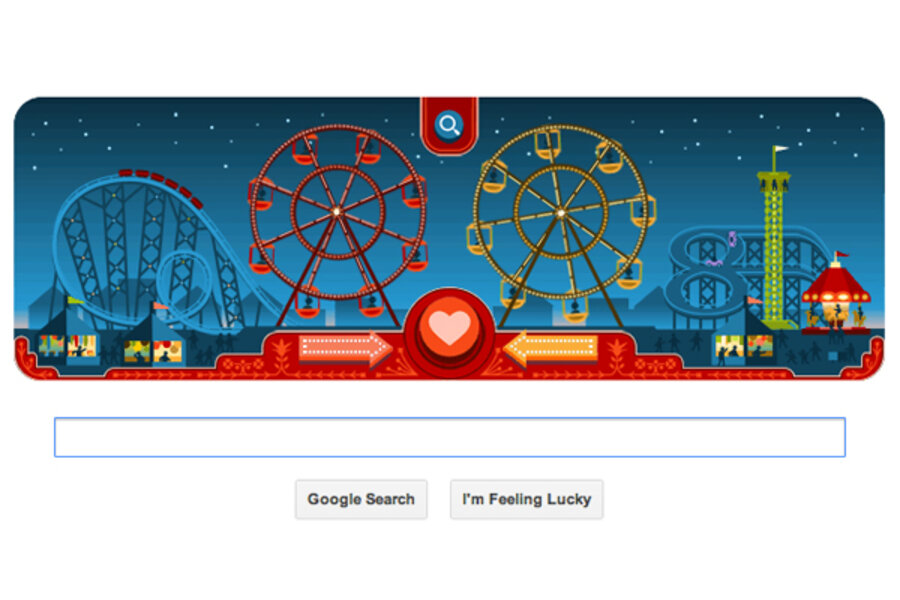George Ferris: How a farmer's son invented the best ride on Earth
Loading...
The Google homepage today depicts the jagged skyline of a bustling, colorful carnival. Click on the heart button at the bottom of the doodle, and a pair of Ferris wheels spin, eventually yielding cartoon portraits of animal odd couples – a duck and a lovestruck octopus, for instance, or a tiger and an infatuated horse. The whole production is a kind of two-in-one homage, first to Valentine's Day and second to George Ferris, Jr., the inventor of the Ferris wheel.
We're familiar with Valentine's Day, of course. But what about Mr. Ferris? Well, the inventor was born 154 years ago today as the son of two farmers in the small city of Galesburg, Ill.
Later, Mr. Ferris signed on at Rensselaer Polytechnical Institute in Troy, N.Y., where he eventually earned a degree in civil engineering, with a specialty in bridge and railroad work. (Senior thesis title: "Review of Wrought Iron Deck Bridge on the Boston Hoosac Tunnel & Western Railway at Schaghticoke, N.Y.")
In the late 1880s, he opened his own Pittsburgh-based company, G.W.G. Ferris & Co., and made a living building tunnels and train lines.
But Ferris was ambitious and creative, and he yearned to leave his mark on the world. He had paid close attention to the unveiling of the Eiffel Tower, at the Paris Exhibition of 1889. He decided he would design something to outdo even that grand spire, and he began sketching plans for an "observation wheel," which he hoped would appear at the World's Columbian Exhibition of 1893.
At first the committee dismissed him as a "crackpot," but after apparently convincing a few of his fellow engineers to vouch for his plans, Ferris returned and saw his scheme accepted.
A brief bio on the website of the Lemelson-MIT Program notes that Ferris's creation, completed in 1893, was a technological marvel on an incredibly vast scale:
Ferris' wheel was modeled on a bicycle wheel: [in the place of spokes] to maintain the wheel's shape and balance, it had heavy steel beams; the "forks" in which the axle was set were two steel girder pyramids. The wheel was 264 feet high, the supporting towers were 140 feet high, and the axle – the largest piece of steel ever forged in the US – weighed 46 1/2 tons. The wheel carried 36 elegantly outfitted passenger cars, each of which could fit 40 people sitting or 60 people standing. The wheel was spun by either of two 1,000 horsepower steam engines, and stopped by an oversized air brake.
Ferris quickly found himself the target of an array of patent infringement lawsuits; he managed to fend them off but he died a few years later, in 1896, at the age of 37. His legacy endures.
Perhaps the most famous Ferris wheel in the world today is the London Eye, which towers more than 400 feet over the River Thames, in London. An estimated 10,000 people ride it each day and 3.5 million visit the Eye every year, making it one of the most popular tourist attractions in England. But the Eye is not the tallest Ferris wheel in the world. That honor belongs to the Singapore Flyer, a 541-foot monster finished in 2008.
The Flyer, savvy readers will note, is more than twice the height of George Ferris's original wheel. Ferris, we imagine, would be proud.
For more tech news, follow us on Twitter: @CSMHorizonsBlog







